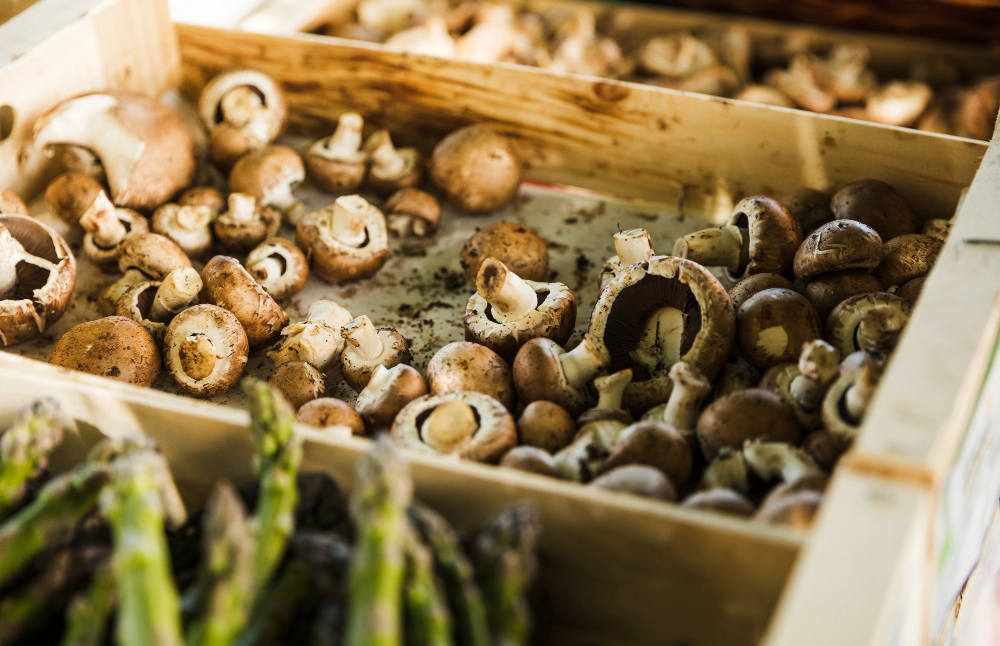Mushrooms, with their earthy flavors and versatile culinary uses, are a favorite among food enthusiasts. While store-bought mushrooms are readily available, growing your own at home can be a rewarding and sustainable endeavor. Whether you’re a seasoned gardener or a novice enthusiast, cultivating mushrooms indoors is a fascinating and surprisingly straightforward process. Let’s embark on a journey into the magical world of home mushroom cultivation and explore the steps to grow your own fungi feast.
Exploring the Options
The first step in growing mushrooms at home is selecting the type of mushroom you want to cultivate. Popular options for home cultivation include button mushrooms, oyster mushrooms, shiitake mushrooms, and portobello mushrooms, among others. Each mushroom variety has its own unique flavor profile, growing requirements, and cultivation methods. Consider your taste preferences, available space, and growing conditions when choosing the mushroom variety for your home garden.
Creating the Ideal Habitat
Mushrooms require a nutrient-rich growing medium to thrive and produce bountiful harvests. Common options for growing mediums include compost, straw, sawdust, or specialized mushroom-growing kits. Depending on the mushroom variety you’ve chosen, you may need to prepare the growing medium by pasteurizing or sterilizing it to eliminate competing organisms and ensure optimal conditions for mushroom growth. Research the specific requirements of your chosen mushroom variety to determine the most suitable growing medium.
The Key to Mushroom Growth
Mushroom spawn, also known as mycelium, is the vegetative growth stage of mushrooms and serves as the foundation for mushroom cultivation. Mushroom spawn can be obtained in the form of spores, spawn plugs, or pre-inoculated substrate. You can purchase mushroom spawn from reputable suppliers or harvest your own from wild mushrooms, although this requires expertise and caution. Once you have obtained mushroom spawn, inoculate the prepared growing medium with the spawn to kickstart the mushroom cultivation process.
Mimicking Nature Indoors
Creating the ideal growing conditions is essential for successful mushroom cultivation at home. Most mushrooms thrive in cool, dark, and humid environments reminiscent of their natural habitat. Maintain a consistent temperature, typically between 55°F and 70°F, and ensure adequate humidity levels to promote mushroom growth. Depending on the mushroom variety, you may need to provide additional ventilation, light exposure, or moisture control to optimize growing conditions.
Patience and Observation
Growing mushrooms at home requires patience and careful observation as mushrooms progress through their growth stages. Monitor the growing medium regularly for signs of mycelial colonization, such as white, thread-like filaments spreading throughout the substrate. As the mycelium matures, small mushroom pins will begin to form, eventually developing into mature mushrooms ready for harvest. Keep a close eye on environmental conditions, moisture levels, and any signs of contamination or disease that may affect mushroom growth.
Reaping the Fruits of Your Labor
Once your mushrooms have reached maturity, it’s time to harvest your bountiful crop and enjoy the fruits of your labor. Harvest mushrooms when they are still young and firm, typically before the caps have fully opened. Use a sharp knife or scissors to cut the mushrooms at the base of the stem, taking care not to disturb the surrounding mycelium. Harvest mushrooms in small batches as they reach maturity, allowing the remaining mushrooms to continue growing and maximizing your harvest over time.
Culinary Adventures Await
With your freshly harvested mushrooms in hand, it’s time to embark on a culinary adventure and savor the flavors of your homegrown delicacies. Whether you prefer to sauté mushrooms with garlic and herbs, add them to soups and stews, or use them as a gourmet pizza topping, homegrown mushrooms add a delightful touch to any dish. Experiment with different cooking methods, flavor combinations, and mushroom varieties to discover your favorite ways to enjoy your homegrown harvest. With a bit of patience, care, and creativity, you can cultivate a thriving mushroom garden and elevate your culinary repertoire with homegrown goodness.
